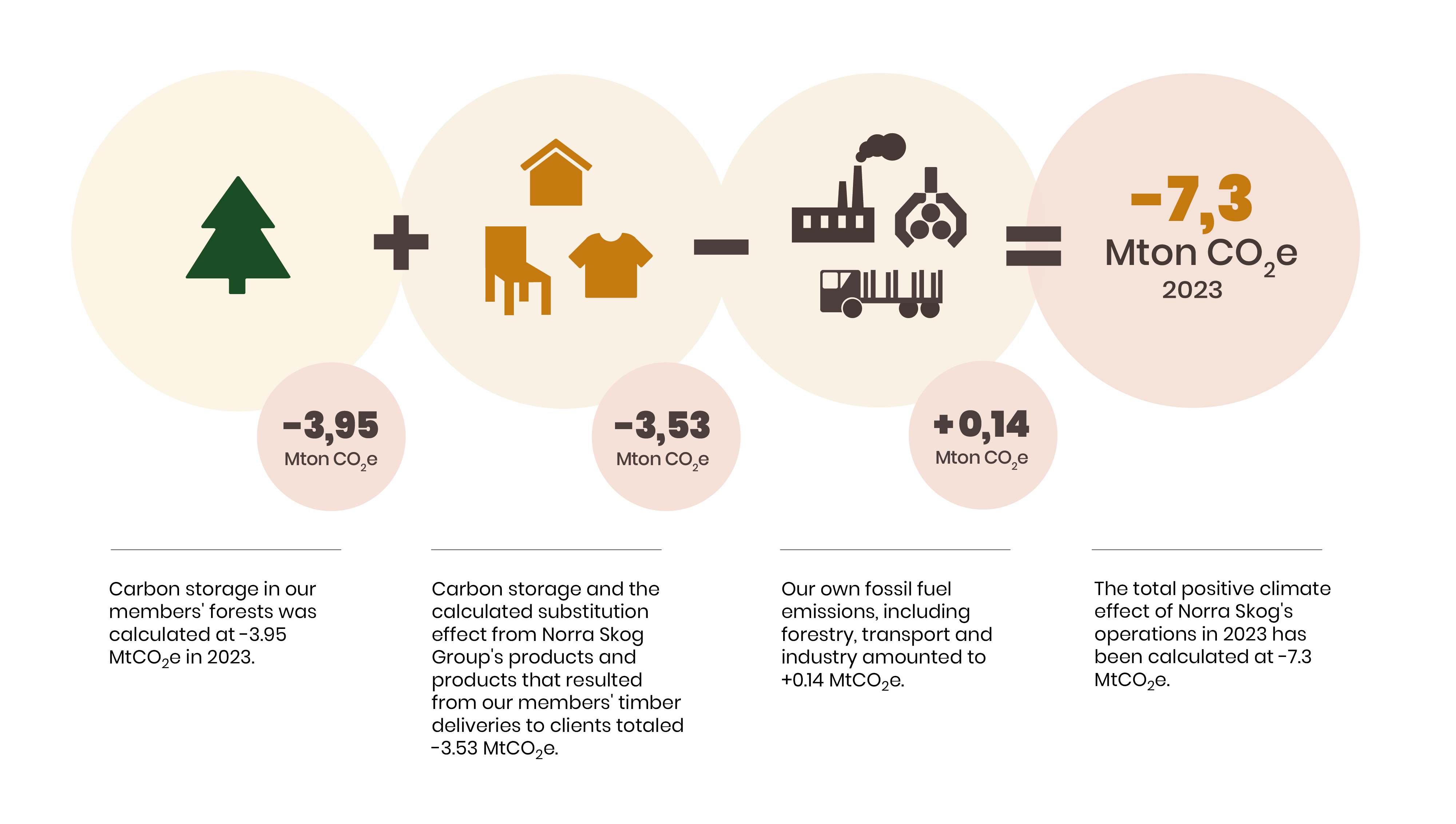The climate benefits of our forests is continually being debated and generates strong opinions. Should our forests be felled and farmed or should they be left standing? Should substitution effects be factored in, and if so, how can that be done accurately?
The conclusions depend, among other things, on whether a short or long term perspective is adopted.
“The short term and greatest effect on carbon storage in forests can be achieved by reducing felling - depending on just how much it is reduced, of course. In the longer term, i.e. several decades to a few centuries, carbon sequestration in unmanaged forests will decrease and eventually cease as the trees age, die or burn up. A managed forest with maintained or increased growth, however, continues to sequester carbon”, says Per-Erik Wikberg, an Environmental Analysis Specialist at SLU.
Added to this is the substitution effect, which is the reduction of climate-damaging emissions that occurs when wood-based products are used instead of other products that are worse for our climate.
“Wood-based products benefit the environment greatly when they replace oil and concrete in, for example, building structures, packaging, hygiene products, textiles and energy. This is how renewable forest materials can really contribute to a fossil-free future”, says Patrik Jonsson.
“The issue of increasing levels of carbon sequestration through reduced felling is more political than scientific, because reduced felling also means a reduced supply of sawn timber products, paper pulp and forest energy. If this is compensated for by increased imports or increased consumption of fossil-fuel alternatives, no benefit to our climate will have been achieved”, says Per-Erik Wikberg.
Sweden, Norway and Finland all have extremely active forestry industries. The carbon sink in these three countries together has tripled in just under 60 years, while felling has increased by 40 percent.
The Nordic countries have also been compared with other countries with boreal forests that have less active forestry industries. In Sweden, Norway and Finland, levels of carbon stored in forests have increased by 35 percent in just over 25 years. In Russia and Canada, however, levels remain unchanged, while in Alaska it has even decreased. One explanation is that forests in more passively cultivated countries burn more often, while fires are unusual in the cultivated forests of Nordic countries. Boreal forests also appear to be the most important factor for carbon sequestration on earth. An analysis based on satellite data found that boreal forests accounted for 0.37 billion tons of the world's increased total carbon storage of 0.5 billion tons of carbon per year.
“The results show the enormous amounts of carbon dioxide that forests absorb as they grow, and it is proof that we are doing the right thing with our Swedish forests. The fact we cut down and then replant more trees than we take has a positive effect on the climate”, says Patrik Jonsson, and adds:
“We obviously want to have even greater positive effects on our climate, and we can achieve that by increasing the pace of forestry activity and developing more wood-based products. This can be done in various ways, including value-creating forestry, fertilizing, clearing ditches and using faster growing types of trees with shorter cycle times. By creating more photosynthesis on the same land surface we can maximize the benefits to our climate and make more wood-based products. A huge misconception is that it is best to leave our forests untouched. But doing that means we won’t have the raw materials needed to create wood-based products that can replace those created using fossil fuels. At the same time we also risk the closure of many industries valuable to our country’s economy.
“Fossil fuel emissions made by Norra Skog in 2023, including forestry, transport and industry, amounted to 0.14 million tonnes of carbon dioxide equivalents. During the same period the total positive climate effect of Norra Skog's operations amounted to an impressive 7.3 million tonnes of carbon dioxide equivalents. This figure includes the value of the climate-beneficial products from the forest”.
“We use, in other words, very little carbon dioxide compared to the total climate benefit that our forestry operations provide”, says Patrik Jonsson.
Forests also provide climate benefits by producing bioenergy, which can replace fossil fuels.
“We lead the world in Sweden in terms of bioenergy. Among other things we use sawdust and bark from our sawmills to create energy. In Sweden we only use 25 percent fossil fuel in our businesses, while the same figure globally is 80 percent”, says Patrik Jonsson.
He adds:
“For a long time we have been good at managing our forests in a sustainable way. We have worked with growth-enhancing measures, improved plants, fertilizing and ditching to increase forestry activity while following environmental considerations and working towards biological diversity. On top of that we have a forestry industry that produces climate-friendly products – which is a big difference compared to other countries. We have also learned to work with bioenergy, which has meant that we have been able to reduce our reliance on oil”.

